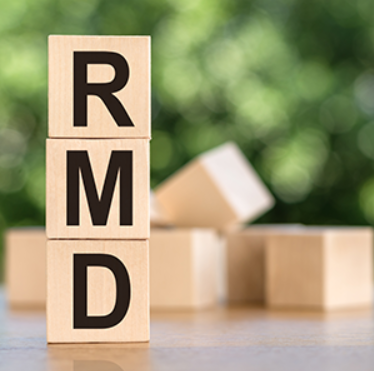Required Minimum Distributions (RMDs) are mandatory withdrawals from retirement accounts that individuals must start taking once they reach a certain age. These distributions are designed to ensure that individuals don’t delay paying taxes on their retirement savings indefinitely. Here’s a closer look at how RMDs work and the rules surrounding them.
What Are RMDs?
RMDs are the minimum amounts that an individual must withdraw annually from their retirement accounts, such as IRAs and 401(k)s, once they reach the required age. The amount is calculated based on the balance of the retirement account at the end of the previous year and the account holder’s life expectancy factor, as listed in the IRS’s Uniform Lifetime Table.
Under the SECURE 2.0 Act, the RMD age is now 73 for individuals who turned 72 after December 31, 2022. However, individuals who turned 72 before January 1, 2023, must begin taking RMDs at age 72. In 2033, the RMD age will increase to 75.
Key RMD Rules as of 2024
- Calculation: The RMD amount is based on your account balance from the previous year and your life expectancy according to IRS tables.
- First RMD: You have until April 1st of the year after you turn 73 to take your first RMD. After that, you must take your RMD by December 31st of each subsequent year.
- Multiple Accounts: If you have multiple retirement accounts, you must calculate the RMD for each account separately. However, you can choose to take the total amount from one or more accounts.
- Penalties: Failing to take your RMD can result in a severe penalty — a 50% excise tax on the amount that wasn’t withdrawn.
- Roth IRAs: Roth IRAs are exempt from RMDs during the account holder’s lifetime, which makes them a beneficial tool for estate planning.
When Do You Have to Take Your First RMD?
The age for starting RMDs is now 73 as of 2024 for those who turned 72 after 2022. However, if you turned 72 before the end of 2022, you must start taking RMDs at age 72. Additionally, in 2033, the RMD age will increase to 75.
For your first RMD, you have the option to either take it in the year you turn 73 or delay it until April 1st of the following year. However, delaying it until the next year means you will need to take two RMDs in that year — one for the current year and one for the next year.
Exceptions to RMD Rules
There are a few exceptions where RMD rules can vary:
- Still Working: If you’re still working and not a 5% owner of the business sponsoring your 401(k), you may delay your RMD from that account until you retire. This doesn’t apply to IRAs or other retirement plans.
- Roth Accounts: Roth IRAs are not subject to RMDs during the account holder’s lifetime, making them a favorable choice for estate planning. Roth 401(k)s, however, are subject to RMDs, though recent legislation aims to align Roth 401(k) rules with those of Roth IRAs.
- Beneficiaries: The rules for RMDs differ for beneficiaries who inherit retirement accounts, depending on factors such as marital status and whether the beneficiary is a minor or disabled. These distinctions can affect the timing and amounts of required distributions.
RMD Examples and Scenarios
- Example 1: If you reach age 72 in December 2022, you must take your first RMD by April 1, 2023. If you delay your distribution until 2023, you’ll need to take two distributions in that year — one for 2022 and another for 2023.
- Example 2: If you’re still employed and own more than 5% of the company you work for, you must take your first RMD by April 1, 2024, regardless of your employment status.
- Example 3: If you have multiple retirement plans, such as one with your current employer and one from a previous job, your first RMD from your current employer’s plan can be delayed until April 1, 2026, but your RMD from your former employer’s plan must be taken by April 1, 2025.
Should You Delay Your First RMD?
Deciding whether to delay your first RMD can have tax implications. If you anticipate being in a lower tax bracket in the following year — perhaps because you’re no longer working — you might choose to delay the distribution. However, if you delay, you’ll be required to take both the first and second distributions in the same year, which could push your income higher for that year and result in higher taxes.
Receiving two RMDs in one year can increase your taxable income significantly, possibly pushing you into a higher tax bracket and eliminating certain tax exemptions or deductions you may have qualified for.
Comparing the Impact of Taking Your RMD Early vs. Delaying
If you were unmarried and your taxable income was $25,000, with an RMD of $50,000 in 2023, taking your first RMD would increase your taxable income to $75,000. This could result in a federal tax liability of approximately $14,521.
If you delay your first RMD until 2024, your total income in 2024 will rise to $125,000, increasing your tax liability to about $27,981. This would result in an additional $2,257 in taxes compared to taking the first RMD in 2023.
Given the potential tax impact, it’s important to carefully consider the timing of your RMDs and consult with a financial advisor to help optimize your tax strategy.
Conclusion
RMDs are a key consideration for retirement planning. By understanding when RMDs begin, how they are calculated, and the tax implications of delaying or taking them early, you can make better-informed decisions that align with your long-term financial goals. Consulting with a financial advisor is highly recommended to navigate the complexities of RMDs and minimize their tax impact.



